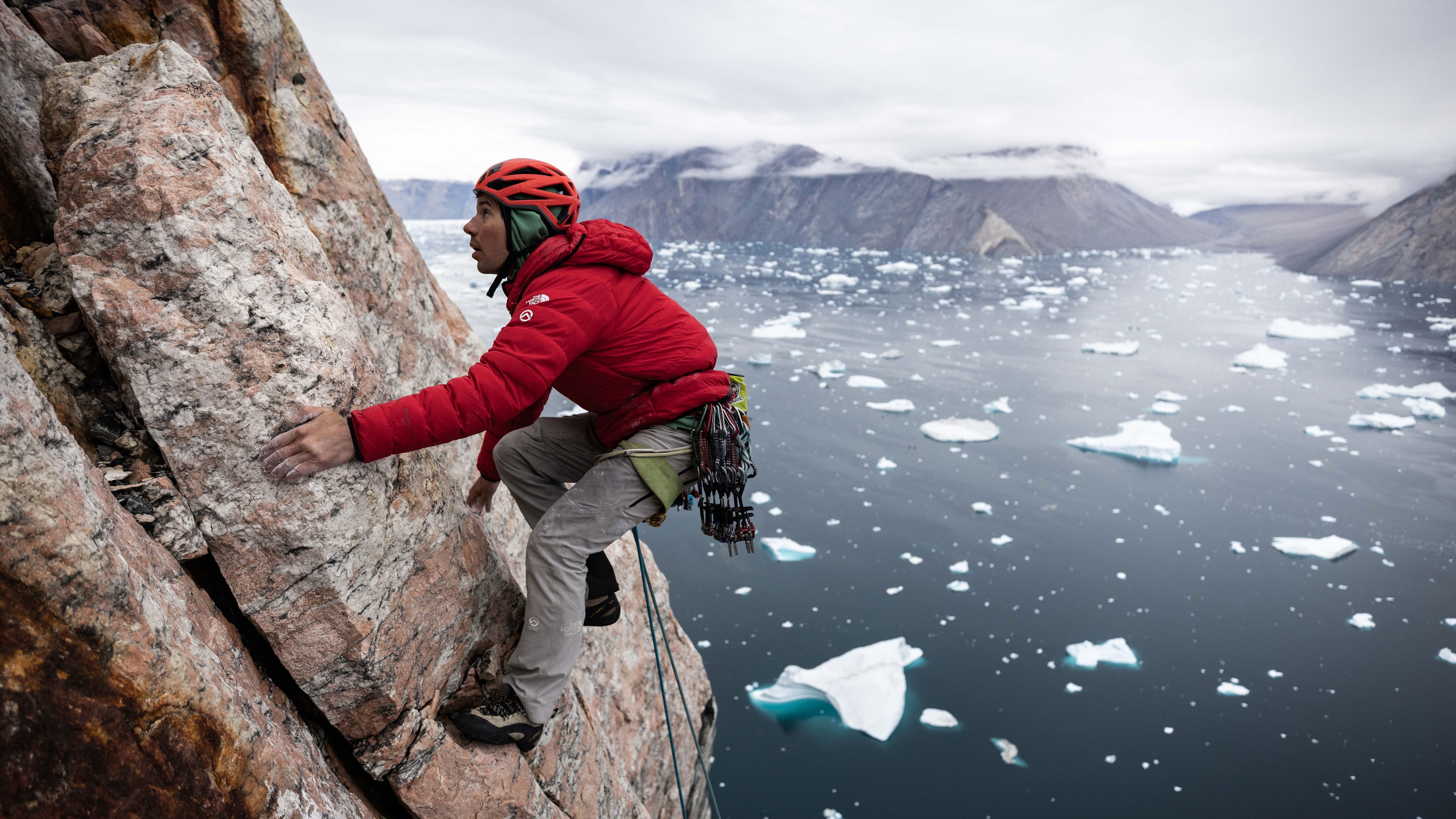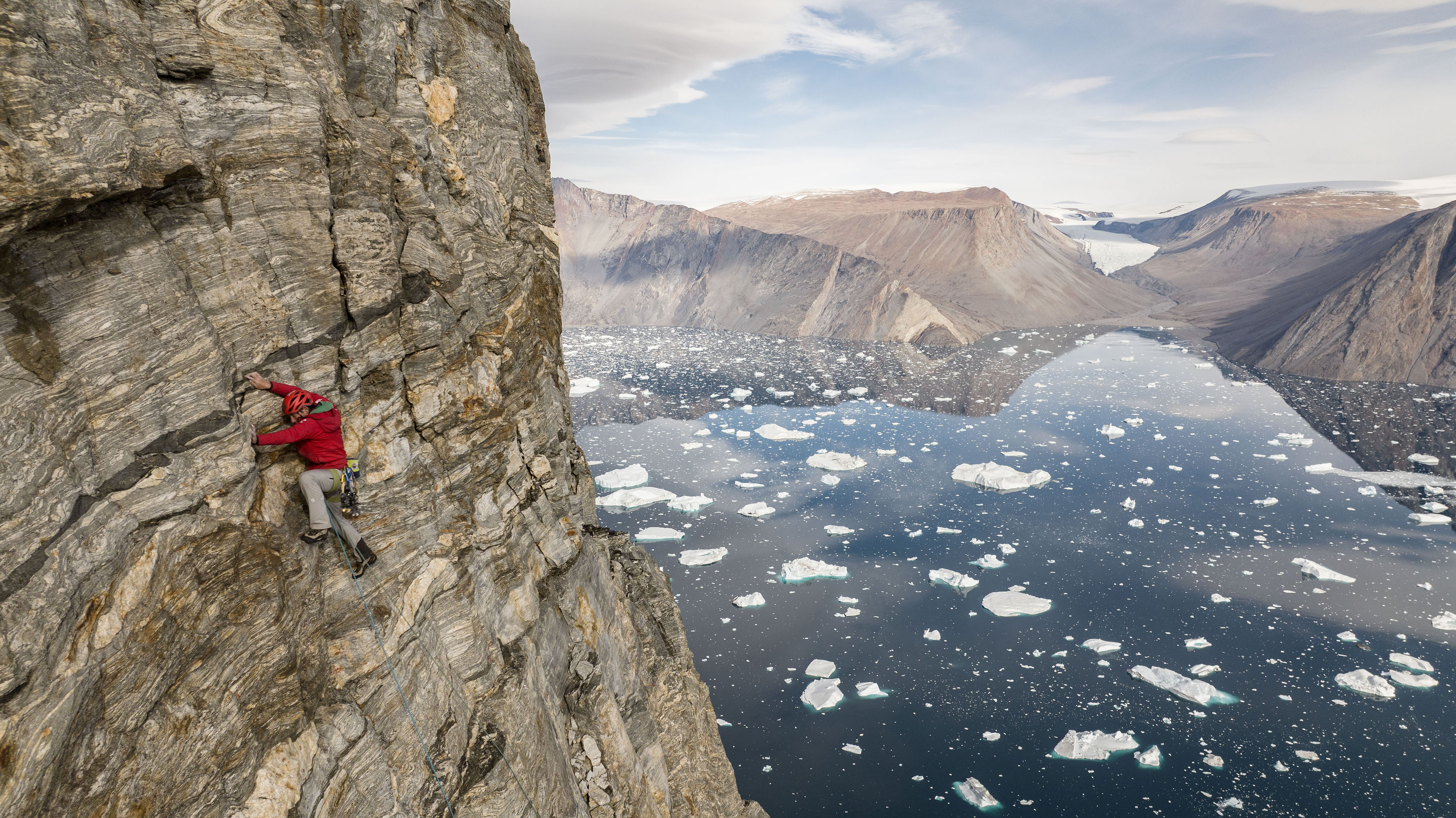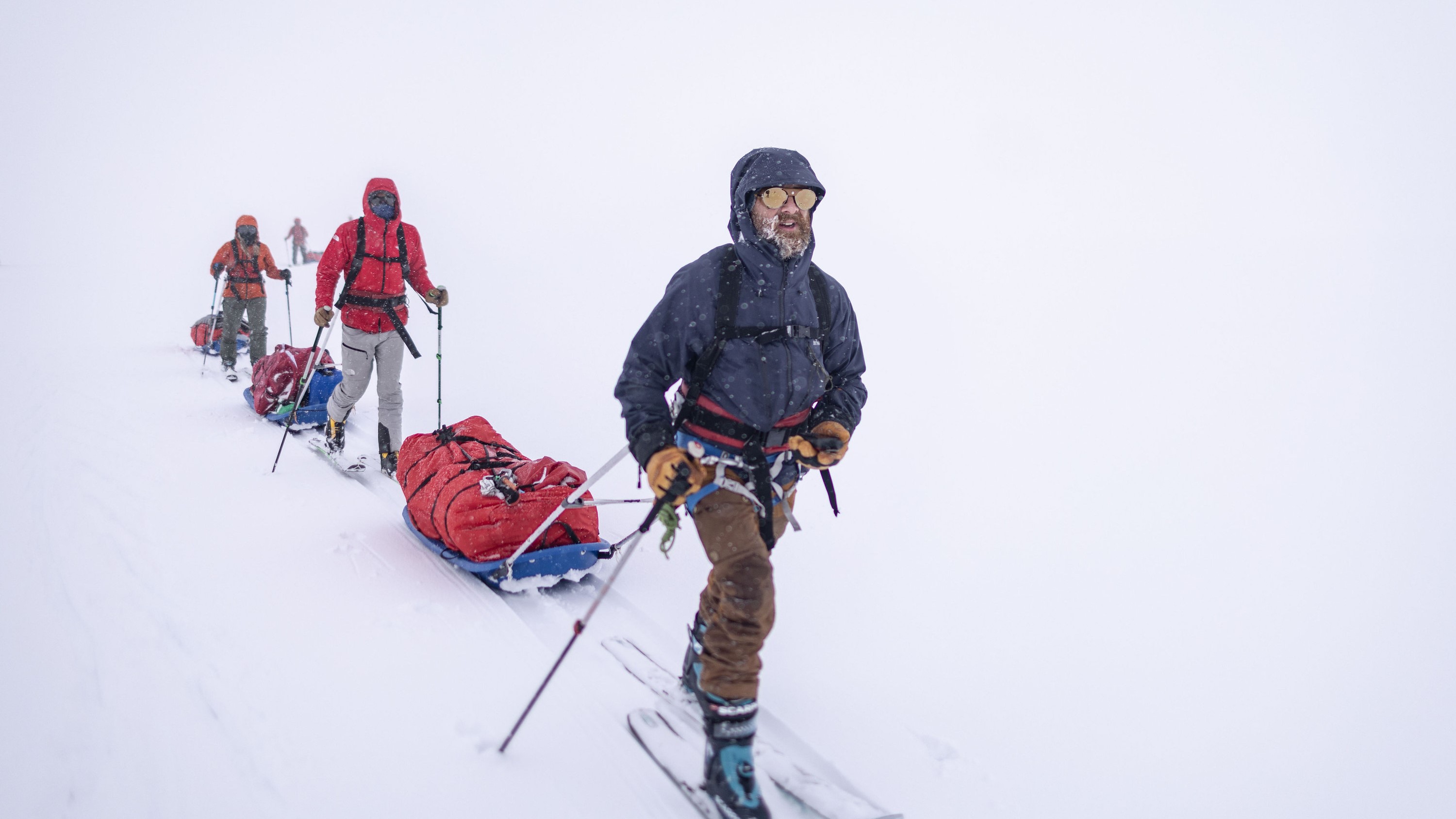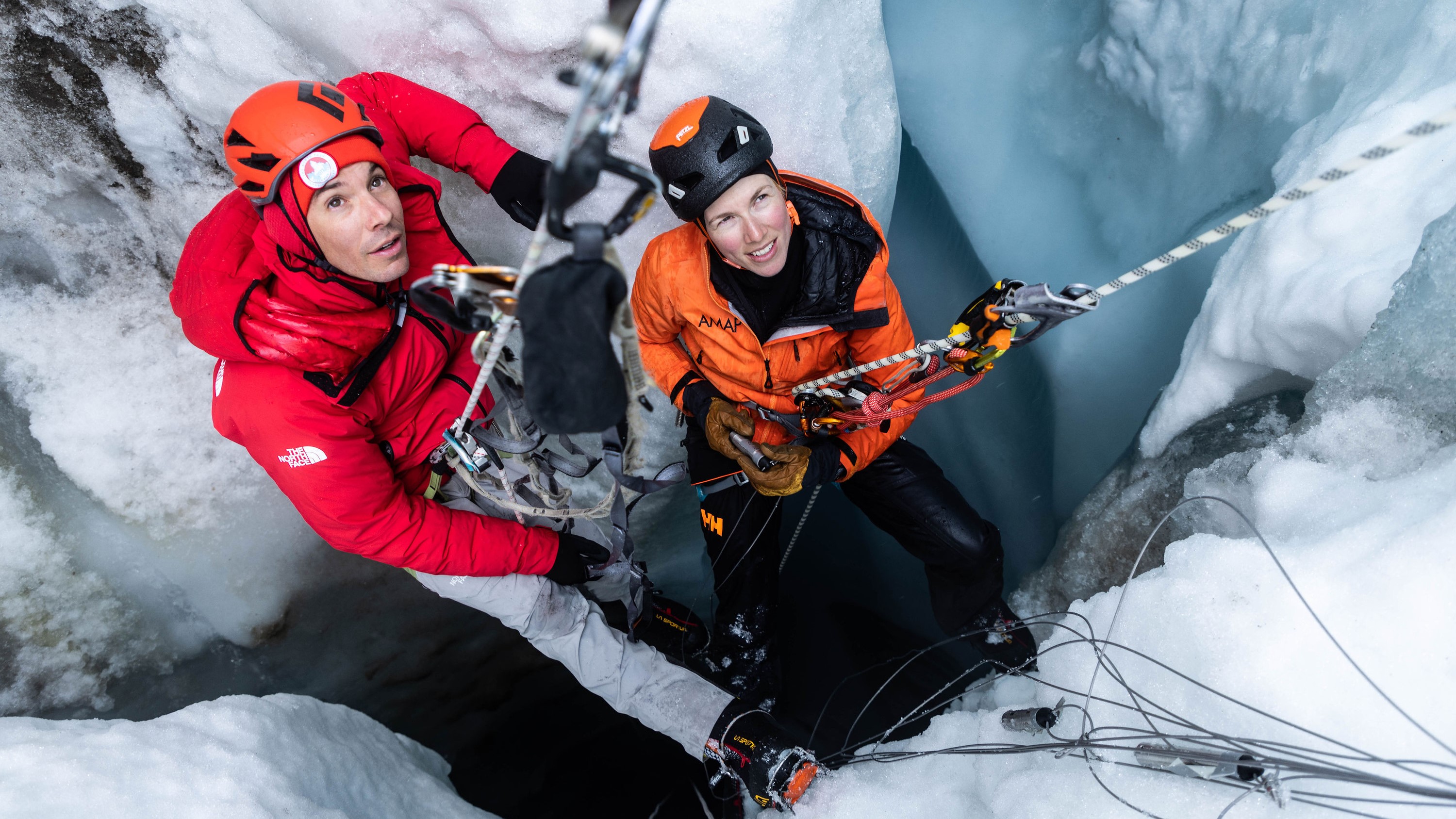“You see a lot of the most empty places in the world” – we speak to Alex Honnold about his daunting Arctic Ascent
Climbing legend Alex Honnold opens up on what it took to tackle one of the world’s tallest monoliths in his latest project

Perhaps more than any other athlete in recent history, people have been wondering: what will Alex Honnold do next? He can probably hang up his climbing shoes any time he wants to – scaling a 2,000-foot vertical hunk of rock in under four hours without any protection is more than most rock climbers will achieve in one lifetime.
Yet if you watched the determination and focus with which he tackled El Capitan back in 2017, you’ll have found it hard to imagine that he’s just going to sit back and revel in his success. And obviously, you’d be right.
Though it’s true that Honnold has made some moves since Free Solo that could hint at a trend some might describe as “settling down” – he bought a house near Vegas, married his partner Sanni McCandless and became a dad – it will come as no surprise to you that the 39-year-old hasn’t stopped eyeing up big walls or taking big risks.
In August 2022, six months after the birth of his daughter, he pulled off the first ascent of one of the world’s tallest monoliths along with climbers Hazel Findlay and Mikey Schaefer (cinematographer for Free Solo) and a small team of guides and scientists including glaciologist Dr. Heïdi Sevestre. The project, which was chronicled for a three-part National Geographic docu series named Arctic Ascent, is part rock climbing porn and part scientific discovery, something Honnold describes as the right combination of team, destination, and objectives all coming together.
“In some ways it kind of harkens back to classical mountaineering where every expedition back in the day always included a geologist and a botanist and a lot of classical mountaineers were also sort of amateurs in those things,” he laughs.
“You know, the sort of Victorian-era approach of dabbling in all the sciences and everyone's taking pressings of flowers and stuffing species of exotic animals that they find along the way.”

There isn’t any stuffing of animals or even much in the way of flowers, however, because the climb takes place in eastern Greenland, a land of rock and ice. The monolith in question is called Ingmikortilaq (which means “the separate one” in Greenlandic) and is 3,750-foot seacliff – that’s three times the height of the Empire State Building and another thousand feet taller than El Cap. And while it’s true that “to Honnold” something has become common usage to describe facing the most menacing feats without fear (he even underwent MRI imaging in 2016 that revealed his amygdala barely activates when he’s exposed to disturbing images), he admits that this particular wall was “very daunting.”
All the latest inspiration, tips and guides to help you plan your next Advnture!
“I don’t want to say we were terrified, but we were pretty concerned when we first saw the wall because we only had two weeks left on the trip, it was raining a lot and it was this huge wall with no obvious way up it.”
Being Honnold, he finds a way up, advancing on this previously untouched route risky move by risky move, projecting as he leads. Once again, he brings us along in a televised event that showcases the awe-inspiring natural beauty of his surroundings and highlights Honnold’s unique brand of tenacity, but in almost every other way, the project couldn’t be more different to the one that put him on the map.
This time, instead of hopping in his van before sunrise and driving up to the wall to pull off a single push to the summit before lunch, it’s a six-week expedition. The approach itself takes three weeks and fills the series’ first two episodes as the team makes a first ascent of a 1,500-foot-high pool wall before completing the first-ever crossing of the Renland Ice Cap which is littered with crevasses before traveling up an iceberg-filled fjord.

Instead of quiet, spacious drone footage of one man against nature in charged solitude, it’s a dialogue-filled journey as the team navigates how to work together, and even if they should. The final episode, which documents the ascent of Ingmikortilaq, sees the crew at odds over whether it’s safe to continue with the mission, though today, Honnold has nothing but praise for his team.
“They’re not all experienced climbers but they are incredibly fit and they made it up no problem. It was a great experience for everybody.”
Episode three sees the scientists remaining behind to complete field work as Honnold, Findlay and Schaefer tackle the big wall. Findlay, who describes herself as “more risk-averse” than Honnold, is frequently seen being subjected to a barrage of rock fall that breaks off the chossy face while Honnold leads. At one point, she directs the camera to zoom in on a mark left in the cliff just moments before by a falling rock that narrowly missed her head.
And when the climbers aren’t being pummeled by rocks, they’re being battered by snow, wind and rain which at one point sees their tent tumbling off down the mountain. This isn’t blubird day after bluebird day like you'll usually find climbing in Yosemite, a place where Honnold admits he loves going whenever the weather is nice. Here, they’re battling serious elements including whiteout conditions which see them abandoning their sleds and gear, not knowing if and when they’ll see them again, and the California-born climber admits this was the greatest challenge on the trip.
“It’s just chilly. It rained a lot, it snowed a lot and then we also just covered a lot of terrain, so it was a lot of hard work with the hiking and the pulling sleds and all that, you know, it's just far. But that's exactly the challenge we signed up for. That's not surprising, but it's still hard work.”

The biggest difference between Arctic Ascent and Free Solo, however, is the purpose behind the project. This isn’t just about one man’s mission to conquer a fearsome cliff face, even if that also happens – it’s part of a larger research project to monitor a rarely studied section of Greenland’s ice cap and better understand the effects of global warming.
“I might just be a random dude having an adventure and taking people along but what I aspire to do is help get many people excited about something that's important for the world,” says Honnold, who’s become known as a climate change activist in recent years.
Greenland might seem a long way off, but as Sevestre explains in the show’s final episode, the future of places much closer to home – New York and LA – depends on this ice wall. Though her initial findings are that it remains much more stable than other parts of the Arctic, she soberly predicts that this won’t last long and now is the time to act to prevent further, irreversible global warming.
Honnold’s contribution is in part technical – he’s arguably one of the few people on the planet that could lead this type of expedition – but his celebrity is something he hopes will inspire his audience to wake up and pay attention to what’s happening in the world beyond our shores.
“I think my dream is that they come out of it inspired and interested, that they learn about the importance of the Greenland ice sheet to global climate and to sea level rise and basically that they learn the importance of the Arctic in general and how quickly it’s warming and what that means for humanity.”

He notes that while there’s always an appetite for “big adventures and big excitement” in sports entertainment television, there’s less of one for science entertainment, and this is an area where he thinks climbers can play a role.
“I think the idea of using climbing as a vehicle for discovery or education still makes a lot of sense and is maybe something that's worth coming back to a little bit.”
The risks of this project may not be as immediate as the possibility of one man falling to a certain death before the viewer's eyes, but they’re easily more far-reaching and provoke a similar sensation in your gut.
Ultimately, however, Arctic Ascent is a dream for anyone who lives for the outdoors. It beckons us closer to the harsh realities of climate change, but it also guides us through a stunning wilderness most of us will never experience firsthand, and that’s okay. For Honnold, the remoteness of Greenland isn’t a problem to be solved; it’s the point he’s trying to make.
“As a climber, you wind up seeing a lot of the most empty places in the world,” he says, likening the trip to his previous expeditions in Antarctica and Alaska.
“A lot of places on earth are really barren and bereft of humans, and I think the point of telling the story is to remind people that we should try to keep it that way as much as possible. The relatively few wild places that are left can hopefully stay as wild as possible for as long as possible.”
Arctic Ascent premieres February 4 on Disney+.
Julia Clarke is a staff writer for Advnture.com and the author of the book Restorative Yoga for Beginners. She loves to explore mountains on foot, bike, skis and belay and then recover on the the yoga mat. Julia graduated with a degree in journalism in 2004 and spent eight years working as a radio presenter in Kansas City, Vermont, Boston and New York City before discovering the joys of the Rocky Mountains. She then detoured west to Colorado and enjoyed 11 years teaching yoga in Vail before returning to her hometown of Glasgow, Scotland in 2020 to focus on family and writing.

